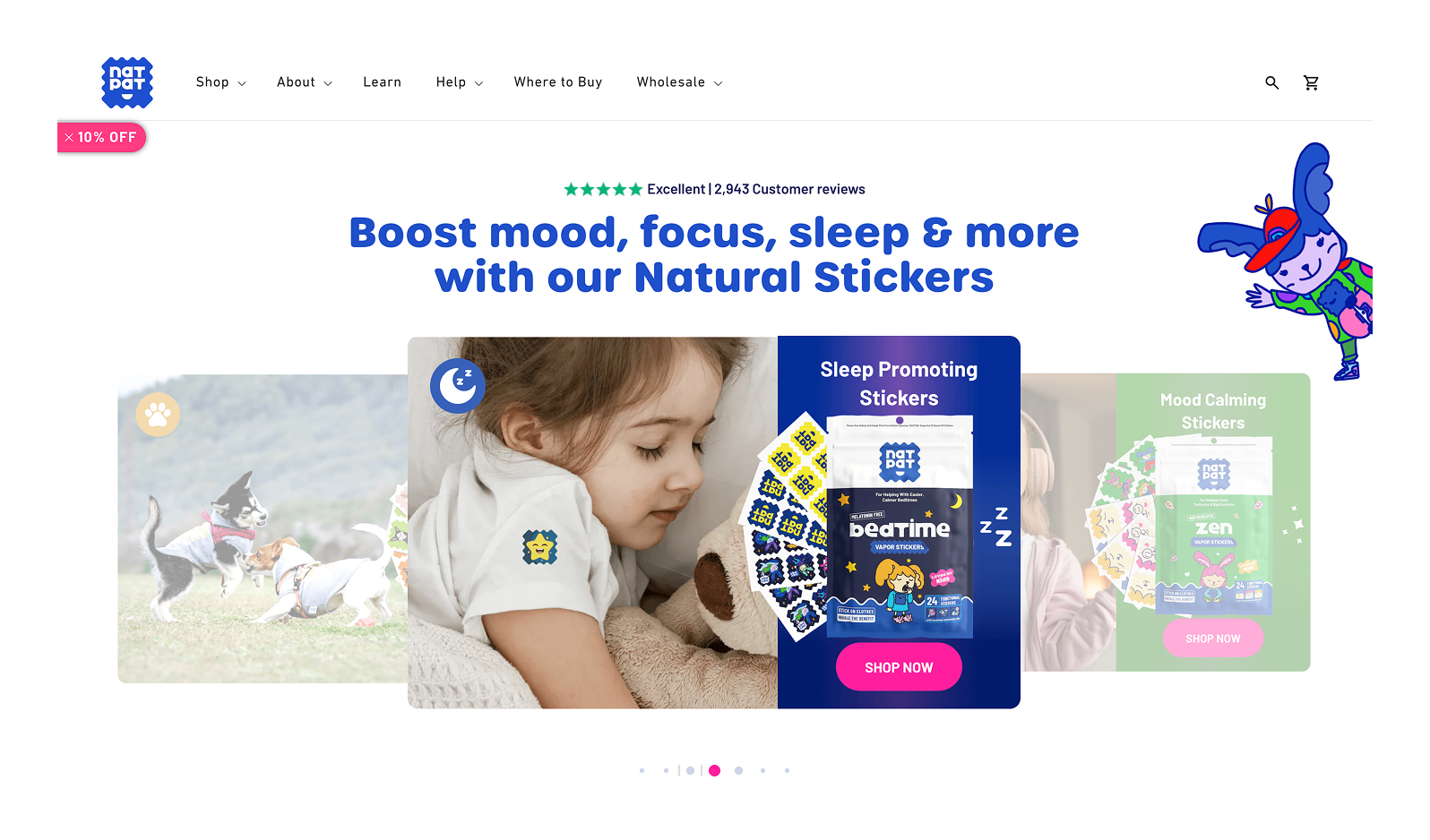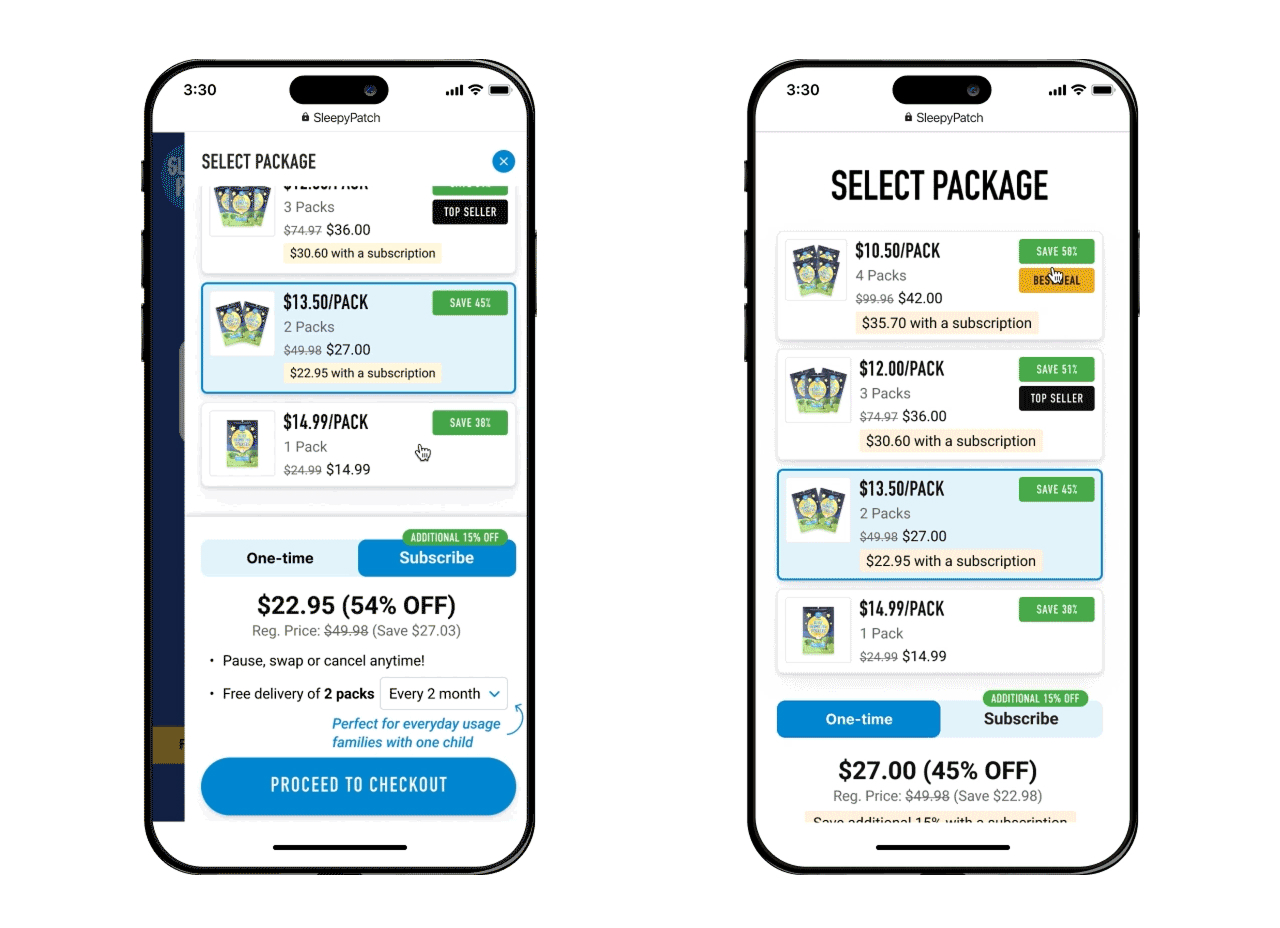Key Takeaway
By introducing a Subscribe & Save option for recurring deliveries, SleepyPatch increased average revenue per user by 23% over six months. The updated experience reduced friction, improved customer retention, and encouraged higher commitment at the point of purchase.
Client Overview
NATPAT offers innovative, child-friendly solutions to everyday challenges through essential oil stickers and skin patches. Their products address specific needs such as sleep support, mood regulation, and insect bite relief. Operating on a direct-to-consumer e-commerce model, NATPAT sells through its online store, targeting customers looking for simple, effective, and family-oriented solutions. NATPAT’s product, SleepyPatch, uses a specially formulated mix of essential oils to bring on sleep.

Opportunity Background
SleepyPatch had strong first-time purchase performance but struggled with repeat orders, despite offering a consumable product ideal for replenishment. Customers had to manually return to the store each time they needed more product, creating friction and increasing the likelihood of churn.
This behavior was inconsistent with the category's expected high reorder rates. A subscription model was identified as a key opportunity to reduce friction and increase lifetime value through automation.
Solution
We introduced a Subscribe & Save option on the product page, reinforced by multiple supporting UX elements:
- A 15% discount was displayed when users selected the subscription option
- A tooltip explained that subscriptions could be easily paused or cancelled
- A drop-down menu allowed users to select the delivery frequency
- A recommendation guide helped users choose the right interval based on family size and pack size
- A control panel gave customers full visibility and control over their subscription

Results
By adding the Subscribe & Save option, the conversion rate increased by 11%, and the average revenue per user from initial purchases increased by 5%. When modelled over six months, the total projected increase in average revenue per user reached 23%, based on reorder behaviour across different delivery intervals.
New users showed the highest opt-in rate for subscriptions, suggesting that automation, combined with an upfront discount, built trust and encouraged longer-term commitment from the first interaction.